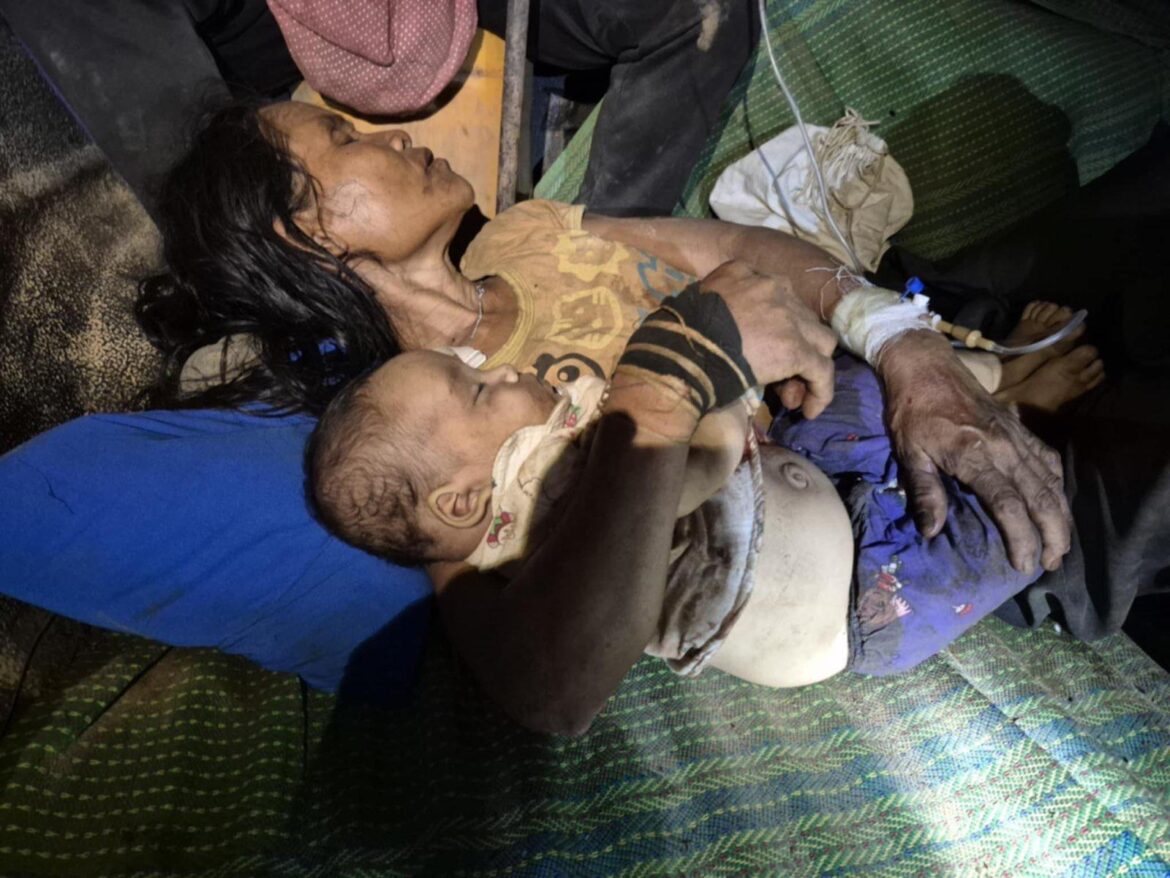Burma’s Earthquake Crisis Weaponized: Junta Bombs Civilians, Blocks Relief, and Steals Aid
The March 28 earthquake that struck Burma (Myanmar) with a devastating 7.7-magnitude impact has turned into a new chapter of horror—not just for its sheer destruction, but for how the ruling military junta has cynically exploited the tragedy. While more than 30 million people face urgent humanitarian needs, the Burma Army continues to bomb civilians, restrict relief efforts, and hijack international aid, using the natural disaster to tighten its authoritarian grip.
Ceasefire in Words, War in Practice
Despite a public ceasefire declaration meant to facilitate earthquake relief, the junta has ramped up its military assaults on resistance strongholds and civilian areas, especially in Karenni, Chin, Shan, and Magway States. Airstrikes have targeted hospitals, villages, and quake victims waiting for care. On April 9, a 500-pound bomb killed an entire family in Saizang, and the same day, another airstrike killed 14 civilians, including a pregnant woman, in Karen State.
Even as thousands remain buried under rubble or huddle in makeshift shelters, the junta sees opportunity, not tragedy. Earthquake-stricken zones are now battlegrounds, and humanitarian aid has become the regime’s newest weapon.
Relief Turned Into a Tool of Control
On April 5, Deputy Prime Minister General Soe Win announced a new directive: all aid work must receive military approval. What followed was a bureaucratic stranglehold:
- Relief workers must register personal information, declare equipment, and secure permits for movement.
- All donor activity is tracked, feeding intelligence operations meant to identify potential ties to the resistance.
- Volunteers risk forced conscription, and even rubble clearance requires official authorization.
This crackdown has paralyzed local and international efforts. Relief teams are being denied entry, turned away from hospitals, or even fired upon, as happened with a Chinese Red Cross convoy. The regime’s militias now monitor aid routes, creating a climate of fear and mistrust.
A Humanitarian Collapse in Progress
Across Sagaing, Mandalay, and Naypyitaw, access to aid is almost nonexistent. UNOCHA estimates 17 million people in 60 townships are at risk of life-threatening shortages. In some regions, civilians are dying from hunger, infection, and exposure, with the monsoon season poised to accelerate the collapse.
Meanwhile, the junta diverts or hoards aid for military zones. Reports of stolen supplies, looted convoys, and aid marked as military “spoils” are increasing. Resistance networks and ethnic civil society groups are stepping in to bypass checkpoints, but the scope of need dwarfs their capacity.
Weaponizing the Earthquake
The military regime is not merely obstructing aid—it is weaponizing the earthquake to solidify control and crush dissent:
- Targeted bombings of quake-hit civilian zones
- Surveillance and registration of aid workers
- Co-opting foreign donations and rerouting them to junta-aligned projects
- Forced conscription and displacement of local volunteers
- Cutoff of direct food and medical aid to liberated regions
Human rights observers note a pattern reminiscent of previous military responses to natural disasters in Burma, including Cyclone Nargis in 2008, when aid was similarly politicized and restricted.
International Response: Sanctions but No Action
While the United States, European Union, and United Nations have issued strong condemnations and incremental sanctions, the junta remains propped up by China and Russia, who continue to provide diplomatic cover and military support. The absence of more decisive action—such as airdropped aid, humanitarian corridors, or protective mandates—has left millions at the mercy of a regime willing to bomb hospitals during an earthquake recovery.
Local organizations and international NGOs are urging the global community to immediately pressure the regime to:
- Lift all aid restrictions
- Cease military operations in earthquake zones
- Allow independent monitoring and distribution of humanitarian aid
- Stop the surveillance and forced conscription of relief workers
Conclusion
What began as a natural disaster has now metastasized into a manmade catastrophe. The Burma Army is using the earthquake as a tool of war, punishing survivors, strangling aid, and bombing civilians with impunity. If the international community does not act swiftly and decisively, millions more will die—not from the quake itself, but from the junta’s calculated cruelty.
Time is running out. Burma does not need more condemnations—it needs intervention.

